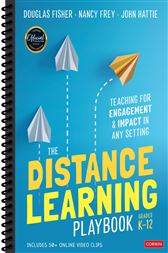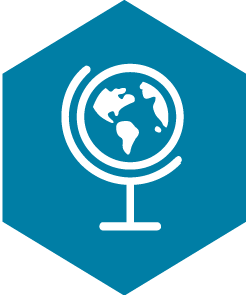Welcome to the start of another school year, that yearly milestone that marks time for educators. How many of you feel like it’s your first year of teaching, even if you have been doing this for a while? Did you spend your summer relaxing or did you consume a constant diet of webinars, PLNs, and virtual meetings? I would venture to guess that many of you planned for the start of this school year in a somewhat different way than from past years.
This summer in a webinar hosted by John Hattie I was reminded that what is most important are the methods of our teaching and not where the teaching takes place. The shift to distance learning (let’s focus on learning) has challenged us to refine or reaffirm the art and science of our craft. Like many of you I’m sure, I spent the summer experimenting with new digital tools, skimming through copious articles, and attending several webinars. All in a effort to wrap my mind around how to effectively deliver instruction in the new school year, whether in face-to-face settings, in a remote setting or combined. Sometimes it was like drinking from a fire hose, but I settled on two resources that I think serve as the best guides for the current situation.
Resource One

From the Hattie, et. al. team who brought you Visible Learning this resource was created post pandemic to specifically address issues educators faced last spring in the midst of “crisis teaching.” The Distance Learning Playbook provides insights into many of the beyond lesson planning components of instruction, such as classroom management, building relationships, establishing credibility, and providing clarity in a distance setting. The book is available as a downloadable ebook, so you don’t even have to wait for it to arrive at your doorstep to start benefiting from the research. A really nice feature of the book are the QR codes for access to videos where the techniques introduced in the book are modeled.
Resource Two
 You don’t have to use this resource to start using HyperDocs in your classroom, but the HyperDoc Handbook is a great tool for honing your skills with HyperDocs. Created by the ladies who first coined the term HyperDoc, the handbook is a practical guide for understanding the pedagogy of HyperDocs, for step-by-step instructions in how to create HyperDocs, and for loads of tips. Also check out this website and our previous blog about HyperDocs.
You don’t have to use this resource to start using HyperDocs in your classroom, but the HyperDoc Handbook is a great tool for honing your skills with HyperDocs. Created by the ladies who first coined the term HyperDoc, the handbook is a practical guide for understanding the pedagogy of HyperDocs, for step-by-step instructions in how to create HyperDocs, and for loads of tips. Also check out this website and our previous blog about HyperDocs.
For educators teaching in settings where some students opted for face-to-face while others opted for remote, HyperDocs can be one of the most efficient ways to deliver instruction. Designing learning experiences in a HyperDoc format allows for the remote learner to direct himself/herself through the lesson at his/her own pace. Students in a classroom can complete the same lesson with teacher direction. In the classroom the lesson could be done individually or in the traditional whole group. For example a video watched by a student at home, could be watched by the entire class in a school setting. The use of HyperDocs should cut down on the need for a lot of duel lesson planning.
HyperDoc Resources for the Thinking Like a Historian and Thinking Like a Geographer.
We applied our learning from both resources to create a few model HyperDocs for the early skills units in the TRS. We hope you find these useful and we wish you much success in the 2020-2021 school year.
The Historian’s Craft and Sourcing- How do historians do their work?
Corroboration and Point of View
Geographers Tools – How do we use maps as tools?
Photo by Emma Matthews Digital Content Production on Unsplash

